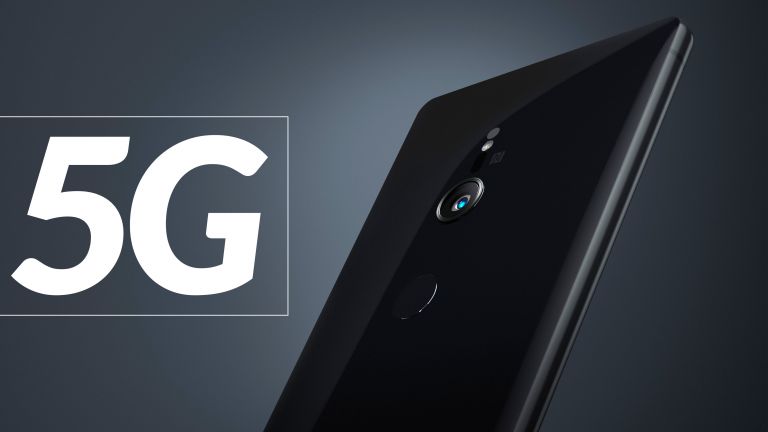Published
2 years agoon

The world cannot yet reap the full potentials promised by the fifth-generation network (5G) despite its racing pace of deployment globally.
This is due to the Non-Standalone (NSA) model of rolling out the service that most countries have adopted to introduce the network into their markets.
The NSA option relies partly on existing 4G LTE infrastructure and brings some new technology like 5G New Radio (NR). The model has the 5G Radio Access Network and the 5G NR interface working together with existing LTE infrastructure and core network.
This means that while only LTE services are supported, the network has the capabilities offered by 5G NR, like enhanced mobile broadband.
There are concerns that this model, which enables deployment of the technology at relatively low costs, cannot support the full benefits promised by 5G network, thus the global market would have to wait for a switch into the Standalone alternative phase to reap full potential of 5G possibilities.
According to the latest Viavi Solutions report: ‘The State of 5G’, most 5G networks deployed are Non-Standalone (NSA) networks.
“There are only 24 5G Standalone (SA) networks globally. It is widely considered that many of the next-generation use cases and monetization models associated with 5G, beyond enhanced Mobile Broadband (eMBB), will only be possible when Standalone 5G networks built on new 5G core networks are in place,” the report said.
Nigeria’s Stand
Nigeria is on the verge of deploying the fifth-generation network through two licensees, MTN Nigeria Communications and Mafab Communications.
Industry regulator, the Nigerian Communications Commission, this week handed over the spectrum to deploy 5G to the duo, while it also mandated them to deploy the service effective from August 24, this year.
However, just like many other countries, Nigeria is also relying on the Non-Standalone option to kick-start 5G experience in the country by riding on the existing 4G LTE infrastructures.
According to the National 5G Policy launched as the blueprint for its realisation by Nigeria’s President, Muhammadu Buhari, it is expected that network operators will upgrade to the Standalone (SA) mode of deployment after moving through an NSA.
“Using an NSA approach allows operators to offer 5G-like experiences while they build out the needed physical infrastructure of a 5G network,” the policy document reads.
Racing Global Deployment
Latest figures indicate that the pace of 5G rollout is accelerating. The State of 5G Report shows that as of end-December 2021, the number of cities worldwide with 5G networks was 1,947, with 635 new cities added in 2021.
The figure again ballooned by the end of January 2022, as 72 countries had 5G networks, with Argentina, Bhutan, Kenya, Kazakhstan, Malaysia, Malta and Mauritius coming online in the second half of 2021.
Europe, Middle East & Africa (EMEA) passed Asia Pacific including Greater China (APAC), to become the region with the most 5G cities, at 839. APAC has 689 5G cities and the Americas has 419.
Distribution by countries shows that China has the most 5G cities (356), ahead of the US (296) and the Philippines (98). However, more than half of China’s so called 5G subscribers are still on 4G networks.
Growing Subscription to Open RAN
The State of 5G also highlights the growing Open Radio Access Network (RAN), an ecosystem, combining mobile operators as well as software and infrastructure vendors, seeking to develop an open, virtualized Radio Access Network with embedded Artificial Intelligence (AI) control.
According to the report, as of March 2022, 64 operators have publicly announced their participation in the development of Open RAN networks.
This breaks down to 23 live deployments of Open RAN networks, 34 in the trial phase with a further seven operators that have publicly announced they are in the pre-trial phase.
What Experts are saying
Commenting on the report, technical experts at VIAVI Solutions led by Sameh Yamany, the company’s Chief Technical Officer (CTO), said has 5G continued to enjoy impressive expansion, despite the headwinds of a global pandemic.
He added that what comes next in 5G is the reinforcement of networks saying this will take a couple of forms.
“Firstly, we expect to see more Standalone 5G networks, which will deliver on much of the promise of 5G, both for the operator and for the wider ecosystem of users.
“Secondly, we expect to see Open RAN continue its rapid development and start to become a de facto standard. VIAVI will continue to play a central role in testing those new networks as they are built and expanded,” he said.
About the Report
The State of 5G Deployments infographic is available here. The data was compiled from publicly available sources for information purposes only, as part of the VIAVI practice of tracking trends to enable cutting-edge technology development.
The State of 5G Deployments serves as a companion document to the VIAVI Gigabit Monitor, a visual database of gigabit internet deployments worldwide.














